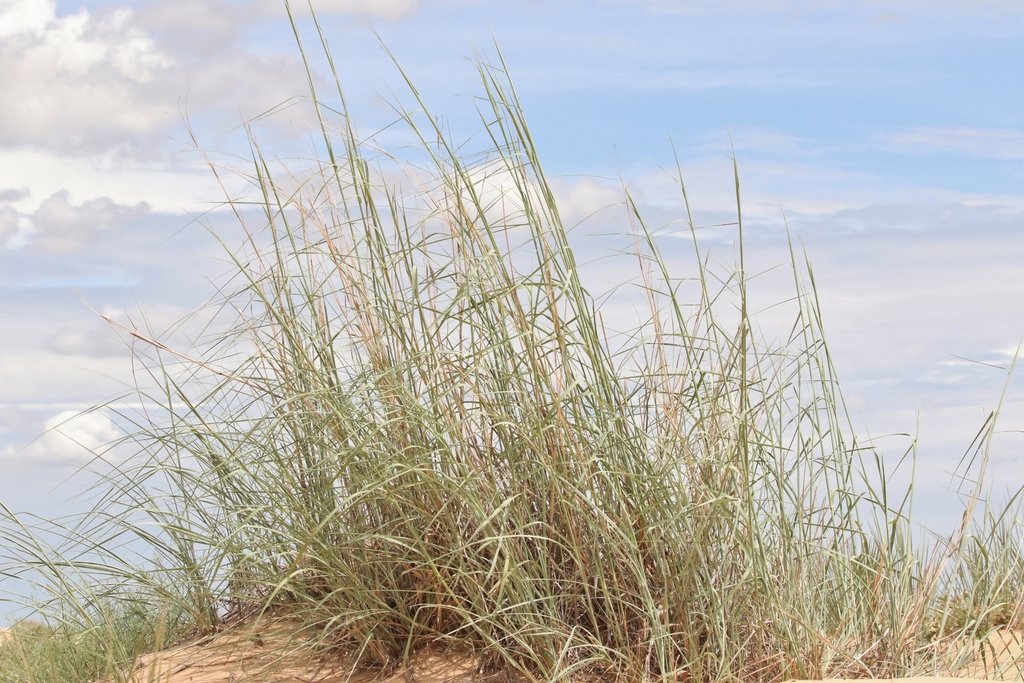Giant Dropseed
Sporobolus giganteus
Family: Poaceae
Large, robust, caespitose perennial grass; not rhizomatous reaching 6+’ tall. Inflorescence appears July through October.
Giant dropseed is distinguished by being a robust perennial bunchgrass, often reaching 1-2 m tall, with thick bases and tufts of white hairs at the apex of the leaf sheaths; and a tall narrow terminal inflorescence, loosely to tightly contracted
Full to part sun, best on irrigation.
Large seeded and loved by granivorous birds.
Photo by James Bailey, iNaturalist
Sporobolus giganteus on SEINET
This is an important habitat plant. Large seeded and loved by granivorous birds. Edible for humans as well, though collecting seeds is difficult. This grass provides a good forage for livestock, producing large amounts of green matter. It is an important species for grazers on grasslands in parts of Arizona. Native grasses are extremely important plants for wildlife: as nesting material for birds as well as native bees and other insects, as habitat for many organisms, and as food: adult insects eat the foliage, granivorous birds depend on many species for seeds, and most grass species are used as larval hosts for many species of butterflies and moths, especially skippers. Many bee species collect the pollen of many species of grasses. All can be used for desert tortoise enclosures.
Grasses also play an important role in the ecology of soil, and because they are monocots, they can be planted close to other species of plants (the nature of the root systems of monocots renders them less imposing on neighboring plants). They hold soil down and help prevent erosion. Many species are pioneer plants that convert disturbed soils into hospitable places for other plants.
Seeds were made into meal for bread, for mush, and the stiff stems were made into a brush to clean cacti spines.
The name for the genus comes from thje Greek words 'spora' meaning "seed" and 'ballein' meaning "to throw" alluding to the free seed and the manner of its release. The species, giganteus, refers to its giant size relative to other species in the genus. There are 226 species of Sporobolus that grow in tropical, sub¬tropical, and warm-temperate regions throughout the world.
Found in sand dunes and sandy areas along rivers and roadsides; below 6,000 ft. in southern Utah, Arizona, Colorado, New Mexico, Texas, Oklahoma; south into southern Mexico.



